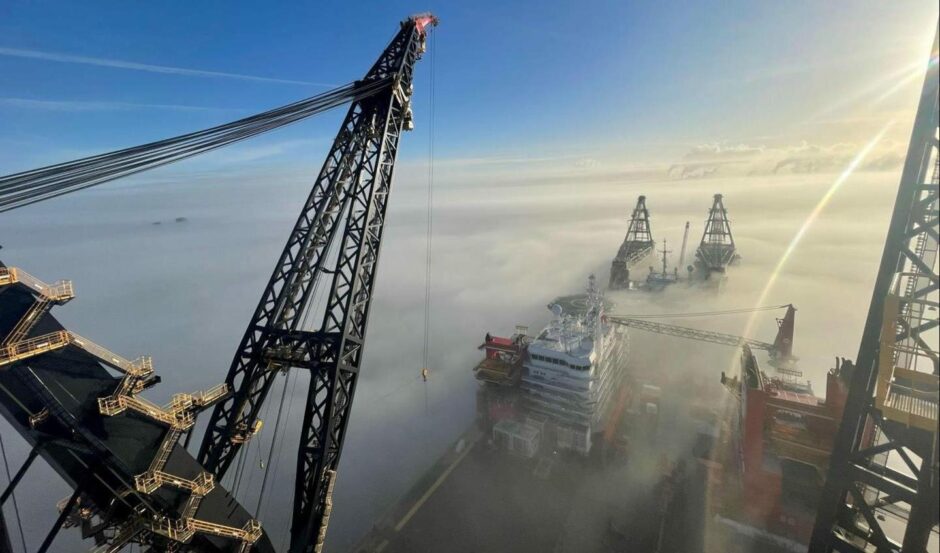
The UK will spend billions removing oil and gas assets over the next decade, and billions more installing offshore windfarms – so why doesn’t it have a heavy lift business to capitalise on it?
That’s a question that TAQA decommissioning director David Wilson brought up this month, who said there’s a “really strong business case” for a UK firm to invest in a vessel to “remove some of our offshore oil and gas assets and to support the sustainable wind energy”.
There’s plenty to capitlalise on and he said it’s “unfortunate” that the UK hasn’t done so.
The annual Offshore Decommissioning Conference in St Andrews heard this week there’s £20bn to be spent on removing North Sea assets over the next 10 years, and some 200 windfarms to be installed over that time.
The two are in competition; with some of the heavy-lift capacity for decommissioning already being booked out of the market by offshore wind.
So why hasn’t the UK capitalised? Analysts say finding a firm to commit to it – with certainty of a return on their investment, is a nigh-on impossible task.
Why not then?
Switzerland’s Allseas and Heerema, of the Netherlands, dominate the market for oil and gas with their Pioneering Spirit and Sleipnir heavy lift vessels.
If it’s a major piece of removal for heavy oil and gas, then recent years have shown you can expect one of those names on the contract.
Some smaller competition can be found elsewhere, like in Italy’s Saipem, for more modest jobs.
But why can’t the UK get in on the action?
Decom is a constantly moving target and these vessels are not cheap, as Thom Payne of Westwood Global Energy Group points out, meaning it’s just too tall an order.
He says: “The Sleipnir cost $1.5bn to build, the Pioneering Spirit even more. Both vessels are what’s required for CNS/NNS decom scopes but are way over specced for wind work (although they’ll pick up substation jobs).
“Decom is a constantly moving target and asking a newcomer with no track record to drop $1.5-$2bn on an o&g focussed new build is basically impossible in the current climate.”
That view is echoed by Martha Vasquez of Boston Consulting Group.
She said: “My sense is rigs and HLVs are an expensive investment that requires reasonable certainty of demand.”
Unlike Thom, she said it’s not impossible, but both customers and the supply chain need to commit.
“We have seen examples where suppliers are willing to invest,” she said, pointing to a recent onshore example in the Netherlands where supply chain catered to a request from operator NAM for a fully electrified plugging and abandonment unit.
Something similar for heavy-lift could be a solution.
Do we even need one?
Do we really need a heavy lift business? Industry argues that plugging and abandonment, which covers 40-50% of decom costs, are usually met through local UK companies.
It does mean however, that a chunk of the domestic value is going overseas contractors while the UK misses out on some international opportunities in places like Australia and the Gulf of Mexico as decom ramps up.
Ultimately industry argues its best to focus on areas where the UK already has strong capability.
Investment problems seem to boil down to issues around decommissioning timeline uncertainty.
Recent political events in the UK – the windfall tax – have also led to speculation that decommissioning targets could move once again, as firms prioritise their reduced capital on production projects.
Yvonne Telford, also of Westwood Global, pointed to investment uncertainty, as well as other issues domestically for the UK capitalising on the offshore wind market.
To date, most of offshore wind work for UK projects has gone overseas, with a risk of the same going forward.
She said: “Decommissioning spend in the UK is a huge figure, but the timing of the spend is not fixed, which would therefore hinder investors.
“As with many aspects of the wind market, the UK sector is not best positioned to take advantage of the potential expansion in activity.”
Recommended for you

